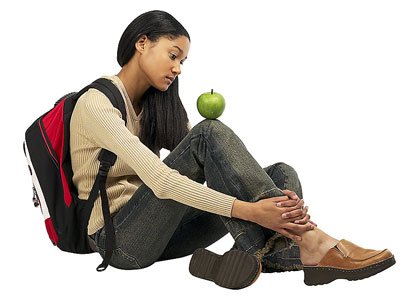The start of a new school year is an excellent time to review precautions families can take to keep their children safe, both inside and outside the classroom. Without proper attention to basic safety measures, school can become a hazardous environment.
In researching this article, it was alarming to learn that a Centers for Disease Control (CDC) report found “80 percent of elementary school children visited the school nurse for an injury-related complaint.”
While it was reassuring to hear incidents resulting in the death of a student are rare the CDC says, “Approximately four million children and adolescents are injured at school per year in non-life threatening accidents.”
This figure does not include, minor falls, cuts and abrasions commonly treated during the school day and not reported to the nurse. Injuries at school are most likely to occur on playgrounds (particularly on climbing equipment), on athletic fields, and in gymnasiums.
Although transportation accidents on buses and bikes, as well traffic related incidents walking to and from school continue to pose a grave threat to students, there are other less obvious dangers to the health of youngsters.
According to the National Safety Council, injuries and strains caused by carrying over-stuffed, heavy backpacks are on the increase.
The health issues caused by improper use of a backpack are insidious. The damage to the back and spine can begin long before the child’s discomfort from pain sends an alert.
“The U.S. Consumer Product Safety Commission estimates there are more than 7,300 backpack-related injuries annually treated by hospitals and doctors. Injuries include bruises, sprains and strains to the back and shoulder and fractures.” It is estimates twice as many injuries go unreported and untreated.
The American Academy of Pediatrics recommends that, “a child’s backpack should weigh no more than 10 to 20 percent of the child’s body weight. This figure may vary however, depending on the child’s body strength and fitness.”
There is also a visual first line of defense against backpack injury. Kid’s Health medical advisor, Dr. Steven Dowshen says parents who observe the following signs should take a closer look at whether their child’s backpack is too heavy:
•Changes in posture when wearing the backpack.
•Struggling to get the backpack on
or off.
•Leaning forward to carry the backpack.
•Reports of pain when wearing the backpack.
•Red marks or bruises on the shoulders
Dr. Dowshen advises parents that, “If the child has back pain or numbness or weakness in the arms or legs it should be brought to the attention of the pediatrician.”
“A heavy backpack forces the wearer to bend forward,” says the National Safety Council. “Encourage kids to use their locker or desk frequently throughout the day instead of carrying the entire days’ worth of books in the backpack.
Make sure kids don’t tote unnecessary items— laptops, cell phones and video games can add extra pounds to a pack.
They should only carry those items that are required for the day and remove articles that can be left at home each night.
Even though it might not look as “cool” it is recommended that students, “Wear both straps. Use of one strap shifts the weight to one side, causing muscle spasms and lower back pain. By wearing two shoulder straps, the weight of the backpack is better distributed. When organizing the contents of the backpack, distribute the weight evenly. Place the heaviest items on the bottom to keep the weight off of the shoulders and maintain better posture.
Wear the backpack over the strongest mid-back muscles. The size of the backpack should match the size of the child. It is also important to pay close attention to the way the backpack is positioned on the back. The backpack should rest evenly in the middle of the back. Shoulder straps should be adjusted to allow the child to put on and take off the backpack without difficulty and allow free movement of the arms.”
Finally, remind your child to always use proper lifting techniques— “bend at the knees and use the legs to lift the backpack, placing one shoulder strap on at a time.”
Next week: Bus and bike safety.
Jayne Matthews Hospon writes about education matters because “only the educated are free.”
